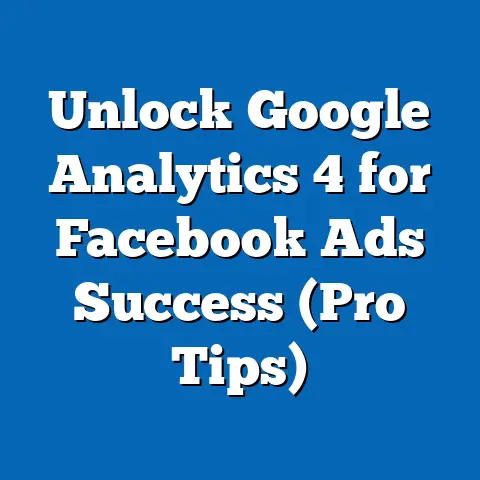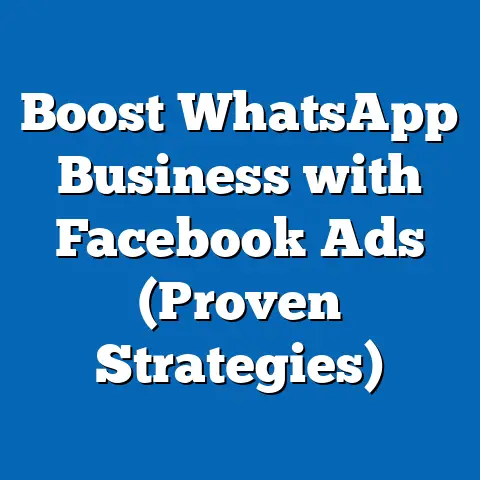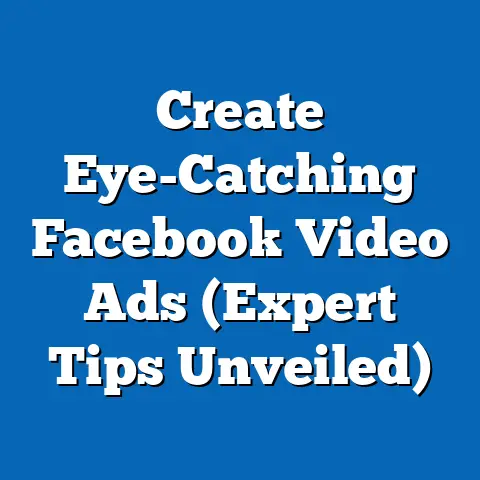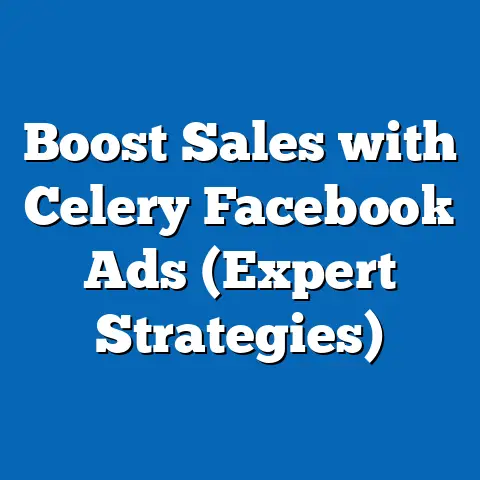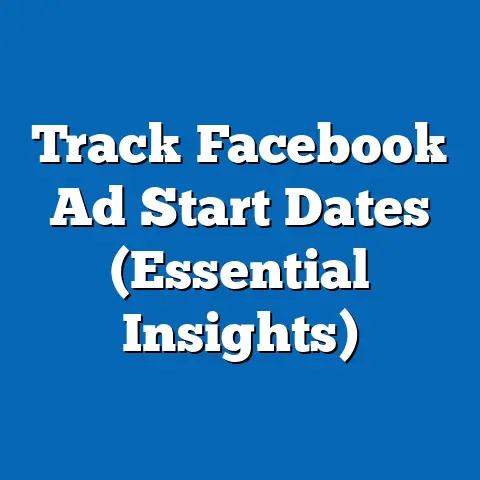Google vs. Facebook Ads: Which Wins? (Critical Comparison)
When it comes to digital advertising, one expert tip stands out: know your audience and align your platform choice with your campaign goals. According to a 2023 report by eMarketer, Google Ads dominates the digital ad market with a 28.6% share of global ad spend, while Meta (Facebook’s parent company) holds a significant 21.4% share. This translates to Google generating approximately $224 billion in ad revenue in 2023, compared to Meta’s $168 billion, showcasing the scale of these advertising giants.
Understanding where your target demographic spends their time online is crucial. For instance, Statista data from 2023 indicates that 71% of adults aged 18-29 use Facebook, while Google’s search engine is used by 84% of all internet users globally across age groups, as per Pew Research Center findings. Trends also show that younger audiences are increasingly active on visually driven platforms like Instagram (part of Meta), with 67% of 18-24-year-olds engaging daily, while Google remains the go-to for intent-driven searches across all demographics.
This article will dive deep into a critical comparison of Google and Facebook Ads, analyzing their strengths, weaknesses, and suitability for various business objectives. We’ll explore key metrics, audience targeting capabilities, cost-effectiveness, and performance trends using data from industry reports and case studies. By the end, you’ll have a clear understanding of which platform may “win” for your specific advertising needs.
Section 1: Overview of Google and Facebook Ads
1.1 Google Ads: The Power of Search Intent
Google Ads, formerly known as Google AdWords, operates primarily on a search-based model, leveraging Google’s dominance as the world’s leading search engine. As of 2023, Google processes over 3.5 billion searches daily, according to Internet Live Stats, making it a goldmine for businesses targeting users with high purchase intent. The platform also includes display ads, YouTube ads, and app promotions, reaching over 2.9 billion monthly active users across its network (Google’s own data).
Google’s advertising ecosystem thrives on keywords, where advertisers bid on terms relevant to their products or services. A 2022 WordStream report revealed that the average cost-per-click (CPC) on Google Ads is $2.69 across industries, with highly competitive sectors like insurance reaching up to $54.91 per click.
The platform’s strength lies in capturing users at the moment of decision-making. For example, 63% of online shoppers start their product research on Google, as per a 2021 Statista survey, making it ideal for businesses focused on conversions.
1.2 Facebook Ads: Social Engagement and Visual Appeal
Facebook Ads, managed through Meta’s Ads Manager, focuses on social engagement and operates across Facebook, Instagram, Messenger, and the Audience Network. With 2.9 billion monthly active users on Facebook alone and 2.1 billion on Instagram as of Q3 2023 (Meta’s quarterly report), the platform offers unparalleled access to a diverse global audience. Its strength lies in visually rich ad formats like carousel ads, stories, and videos, which resonate with users browsing for entertainment or inspiration.
Unlike Google, Facebook Ads prioritize demographic and interest-based targeting over search intent. A 2023 HubSpot study found that the average CPC on Facebook is significantly lower at $0.97, though click-through rates (CTR) average around 0.9%, compared to Google’s 1.91% for search ads (WordStream, 2022).
Facebook excels in brand awareness campaigns, with 78% of marketers reporting success in building visibility through the platform, according to a 2022 Sprout Social survey. However, its conversion rates can lag behind Google for direct sales objectives.
Section 2: Audience Targeting Capabilities
2.1 Google Ads: Intent-Driven Precision
Google Ads targets users based on search queries, location, device, and browsing history, offering a granular approach to reaching potential customers. Its machine learning algorithms, such as Smart Bidding, optimize campaigns by predicting user behavior, with Google reporting a 20% increase in conversions for advertisers using these tools in 2022. Additionally, Google’s Audience Network allows for remarketing to users who have previously interacted with a brand, with remarketing campaigns achieving a 2-3x higher CTR compared to standard display ads (Google Ads Help Center).
Demographically, Google’s audience is broad, with usage consistent across age groups. Pew Research data from 2023 shows that 92% of 18-49-year-olds use Google for search, while 78% of those over 50 do the same, making it a versatile platform for nearly any target group. However, its reliance on user intent means less focus on lifestyle or interest-based targeting compared to Facebook.
2.2 Facebook Ads: Behavioral and Demographic Depth
Facebook’s targeting capabilities are renowned for their depth, allowing advertisers to segment audiences by age, gender, location, interests, behaviors, and even life events like engagements or new jobs. Meta’s 2023 advertising insights report states that over 200 million businesses use its ad tools, largely due to the ability to create hyper-specific custom audiences. For instance, advertisers can target users who have visited specific websites or engaged with certain content, with lookalike audiences increasing reach by matching similar user profiles.
Demographically, Facebook skews younger on platforms like Instagram, where 59% of users are under 34 (Statista, 2023), while its core platform sees higher engagement among 25-54-year-olds, with 69% of this group active daily. This makes it ideal for lifestyle brands or products tied to personal interests, though privacy concerns and recent iOS tracking restrictions have reduced data accuracy, with Meta reporting a 15% drop in ad attribution effectiveness in 2022.
Section 3: Cost and Return on Investment (ROI)
3.1 Google Ads: Higher Costs, Higher Intent
Google Ads often comes with a higher price tag due to its competitive bidding model and focus on high-intent users. According to a 2023 analysis by WordStream, the average cost-per-acquisition (CPA) on Google Ads is $48.96 for search campaigns, though this varies widely by industry—legal services, for instance, average a CPA of $86.02. Despite the cost, Google’s conversion rates are often higher, with a 2022 study by Unbounce showing an average landing page conversion rate of 9.21% for Google Ads traffic.
Historically, Google Ads costs have risen, with CPC increasing by 12% year-over-year from 2021 to 2023 due to growing competition (WordStream data). However, businesses report strong ROI, especially for e-commerce, with Google claiming that advertisers earn $8 for every $1 spent on search ads (Google Economic Impact Report, 2022).
3.2 Facebook Ads: Lower Costs, Broader Reach
Facebook Ads are generally more affordable, with an average CPA of $18.68 across industries, as per a 2023 AdEspresso report. Costs have remained relatively stable, though CPC saw a slight 5% increase from 2021 to 2023 due to platform saturation. The platform’s lower entry cost makes it accessible for small businesses, with 44% of SMBs prioritizing Facebook for ad spend, according to a 2022 Hootsuite survey.
ROI on Facebook can be impressive for awareness campaigns, with Meta reporting that 70% of users discover new products via its platforms. However, conversion rates for direct sales are lower, averaging 6.1% for landing pages (Unbounce, 2022), reflecting its strength in earlier funnel stages like engagement over immediate purchases.
Section 4: Ad Formats and Engagement
4.1 Google Ads: Text and Video Dominance
Google Ads offers a range of formats, including search ads, display banners, shopping ads, and YouTube video ads. Search ads remain the most effective for conversions, with a 2022 Google report noting that 65% of clicks on paid ads come from users intending to buy. YouTube, with 2.5 billion monthly users, is also a powerhouse for video ads, achieving a 31% higher brand lift compared to traditional TV ads (Think with Google, 2023).
Engagement on Google Ads is often tied to intent, meaning higher click-through rates but less “casual” interaction. Display ads, for instance, have a lower average CTR of 0.46%, reflecting their role in awareness rather than action (WordStream, 2022).
4.2 Facebook Ads: Visual Storytelling
Facebook Ads prioritize visual content, with formats like image ads, video ads, stories, and interactive polls driving engagement. A 2023 Sprout Social report found that video ads on Facebook achieve a 6.06% engagement rate, significantly higher than static image ads at 3.73%. Instagram Stories, in particular, resonate with younger audiences, with 500 million daily users viewing Stories as of 2023 (Meta data).
Engagement is a key strength for Facebook, with users spending an average of 33 minutes daily on the platform (Statista, 2023), providing ample opportunity for ad exposure. However, ad fatigue is a growing concern, with 38% of users reporting annoyance at repetitive ads in a 2022 Kantar survey.
Section 5: Performance Metrics and Trends
5.1 Historical Trends: Google vs. Facebook
Historically, Google Ads has maintained a lead in ad revenue and market share, growing from a 24.5% share of global digital ad spend in 2018 to 28.6% in 2023 (eMarketer). This growth reflects its dominance in search, a category that continues to expand as internet usage rises globally. Conversion-focused campaigns have consistently performed better on Google, with a 15% year-over-year increase in search ad clicks from 2019 to 2023 (Google Ads data).
Facebook, meanwhile, saw explosive growth in the early 2010s, peaking at a 23.1% market share in 2019 before stabilizing at 21.4% in 2023 due to competition from platforms like TikTok (eMarketer). Its focus on mobile ads has paid off, with 98% of its ad revenue coming from mobile in 2023, up from 92% in 2018 (Meta reports). However, privacy changes like Apple’s App Tracking Transparency (ATT) have impacted performance, reducing ad revenue growth by an estimated $10 billion in 2022 (Meta Q4 earnings call).
5.2 Current Performance: Key Metrics
In 2023, Google Ads boasts a higher average CTR of 1.91% for search campaigns compared to Facebook’s 0.9% across all ad types (WordStream and AdEspresso data). Google also leads in conversion rates, with e-commerce campaigns achieving an average of 2.81% compared to Facebook’s 1.85% (Unbounce, 2023). However, Facebook excels in cost-per-engagement, with interactions costing an average of $0.11 compared to Google’s $0.50 for display ads (AdEspresso, 2023).
Demographic performance varies significantly. Google Ads performs better with older audiences (50+) for high-value purchases, with 54% of this group clicking on search ads for research (Pew Research, 2023). Facebook, conversely, drives higher engagement among 18-34-year-olds, with 62% interacting with ads on Instagram and Facebook daily (Statista, 2023).
Section 6: Strengths and Weaknesses
6.1 Google Ads: Pros and Cons
Strengths: – High user intent, leading to better conversion rates (9.21% landing page average, Unbounce 2022). – Broad demographic reach, with 84% of global internet users on Google (Pew Research, 2023). – Advanced automation tools like Smart Bidding, improving efficiency by 20% (Google, 2022).
Weaknesses: – Higher costs, with CPC averaging $2.69 and rising annually (WordStream, 2023). – Limited effectiveness for top-of-funnel awareness compared to social platforms. – Less emphasis on visual or emotional storytelling due to text-heavy formats.
6.2 Facebook Ads: Pros and Cons
Strengths: – Lower costs, with CPC at $0.97 and CPA at $18.68 (AdEspresso, 2023). – Superior engagement for visual content, especially video (6.06% engagement rate, Sprout Social 2023). – Detailed demographic and interest targeting, ideal for niche audiences (Meta, 2023).
Weaknesses: – Lower conversion rates for direct sales (1.85% average, Unbounce 2023). – Impacted by privacy restrictions, reducing targeting accuracy by 15% post-ATT (Meta, 2022). – Ad fatigue among users, with 38% expressing annoyance (Kantar, 2022).
Section 7: Case Studies and Real-World Applications
7.1 Google Ads Success: E-Commerce Conversion
A 2022 case study by Google highlighted a mid-sized e-commerce retailer that used Google Shopping Ads to drive sales. By optimizing for high-intent keywords and using Smart Bidding, the retailer achieved a 35% increase in conversions and a 25% reduction in CPA, dropping from $40 to $30 per acquisition. The campaign targeted users aged 25-54, aligning with Google’s strong performance in this demographic (Google Case Studies, 2022).
This example underscores Google’s effectiveness for bottom-of-funnel campaigns where users are ready to buy. The methodology involved A/B testing ad copy and leveraging Google Analytics for performance tracking, ensuring data-driven decisions.
7.2 Facebook Ads Success: Brand Awareness
A 2023 Meta case study showcased a fashion brand using Instagram Reels ads to boost awareness among 18-34-year-olds. The campaign reached 12 million users, achieving a 40% lift in brand recall and a cost-per-impression of just $0.02. Engagement rates hit 8%, well above the platform average, due to creative video content tailored to the target audience (Meta Business Success Stories, 2023).
This case illustrates Facebook’s strength in visual storytelling and early-funnel engagement. The methodology relied on Meta’s Ads Manager for audience segmentation and real-time analytics to adjust creative elements mid-campaign.
Section 8: Data Visualization Description
To better understand the comparison, imagine a side-by-side bar chart titled “Google vs. Facebook Ads: Key Metrics (2023).” The chart would display four metrics: Average CPC, Average CPA, Average CTR, and Average Conversion Rate. Google Ads would show higher bars for CTR (1.91%) and Conversion Rate (2.81%), while Facebook Ads would lead in lower CPC ($0.97 vs. $2.69) and CPA ($18.68 vs. $48.96). Colors like blue for Google and green for Facebook would differentiate the platforms, with data sourced from WordStream and AdEspresso 2023 reports.
A second visualization could be a line graph titled “Market Share Trends (2018-2023),” plotting Google and Facebook’s global digital ad spend share over five years using eMarketer data. Google’s line would rise from 24.5% to 28.6%, while Facebook’s peaks at 23.1% in 2019 before stabilizing at 21.4%, visually capturing their competitive dynamics.
Section 9: Which Platform Wins? Context Matters
Determining whether Google or Facebook Ads “wins” depends on campaign objectives, budget, and target audience. Google Ads is the clear choice for conversion-driven campaigns, particularly in e-commerce or service industries, due to its high-intent audience and superior conversion rates (2.81% vs. 1.85%). Businesses with larger budgets can capitalize on its advanced tools, despite the higher average CPC of $2.69.
Facebook Ads, on the other hand, shines for brand awareness and engagement, especially among younger demographics (18-34) and for visually driven products. Its lower costs (CPC of $0.97) make it ideal for small businesses or campaigns focused on building a social presence, though privacy changes have slightly diminished targeting precision.
For a balanced approach, many marketers use both platforms in tandem. A 2023 MarketingProfs survey found that 62% of businesses allocate budgets across Google and Facebook to cover both awareness and conversion goals, achieving a blended ROI of 4:1 on ad spend.
Conclusion: Broader Implications and Trends
The competition between Google and Facebook Ads reflects broader trends in digital advertising: the shift toward intent-driven versus engagement-driven strategies. As privacy regulations tighten, with initiatives like GDPR and Apple’s ATT impacting data collection, both platforms face challenges in maintaining targeting accuracy. Google’s reliance on search data offers some insulation, while Meta is investing heavily in AI to offset losses, predicting a 10% recovery in ad effectiveness by 2025 (Meta Investor Report, 2023).
Emerging platforms like TikTok, which captured 4.9% of global ad spend in 2023 (eMarketer), are also reshaping the landscape, particularly for younger audiences. This suggests that advertisers must remain agile, diversifying ad spend beyond Google and Facebook to capture evolving user behaviors.
Ultimately, the “winner” is situational. By aligning platform choice with specific goals—Google for conversions, Facebook for engagement—businesses can maximize impact. As digital ad spend is projected to reach $740 billion globally by 2025 (eMarketer), mastering these platforms remains critical for staying competitive in an increasingly crowded market.

